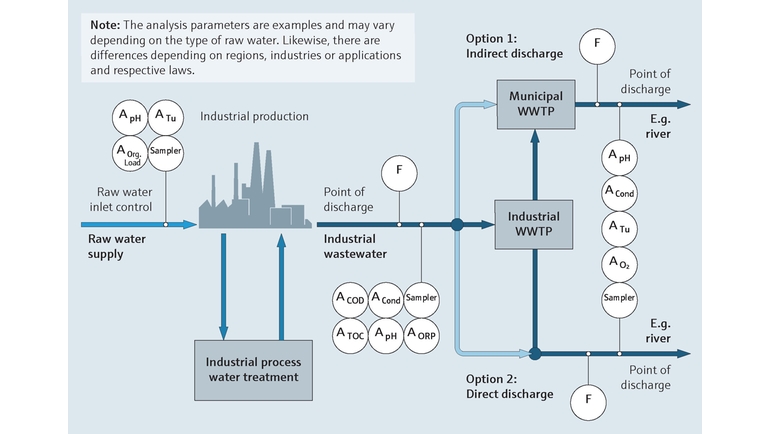Industrial Waste Water Treatment-- Comprehensive Systems for Wastewater Disposal
Wiki Article
Advancements and Advancements in Industrial Waste Water Therapy Technologies
The landscape of industrial wastewater therapy is undertaking a transformative change, driven by advancements that boost both performance and sustainability. As regulatory criteria progress, the assimilation of AI and machine learning into wastewater monitoring systems promises to simplify procedures and make sure compliance.Introduction of Waste Water Treatment Technologies
Wastewater therapy modern technologies encompass an array of approaches developed to get rid of contaminants from commercial effluents before their launch right into the setting. These technologies are critical for preserving environmental balance and ensuring conformity with environmental guidelines. The main classifications of wastewater therapy consist of physical, chemical, and biological techniques, each serving distinct functions based on the nature of the impurities existing.

Biological therapy approaches use bacteria to weaken organic issue, making them especially effective for organic-rich effluents. Methods like activated sludge and biofilm activators harness the natural deterioration capabilities of germs, resulting in substantial reductions in biochemical oxygen need (BOD)
Advanced Purification Techniques
Advanced purification techniques stand for a vital advancement in the realm of industrial wastewater therapy, boosting the efficiency of pollutant elimination processes. Industrial Waste Water Treatment. These methods incorporate a variety of modern technologies, consisting of microfiltration, ultrafiltration, nanofiltration, and turn around osmosis, which offer sequential obstacles for various fragment sizes and chemical frameworksMicrofiltration and ultrafiltration use membrane layer systems to eliminate suspended solids, germs, and bigger natural particles, improving the quality of effluent before further therapy. Nanofiltration connects the gap between ultrafiltration and reverse osmosis, efficiently eliminating divalent ions and natural substances, hence decreasing the tons on downstream processes.
Reverse osmosis supplies the highest degree of purification by allowing just water and little molecules to pass through its semi-permeable membrane layers, making it suitable for recovering top quality water from industrial effluents. Current improvements in membrane modern technology, consisting of the development of even more long lasting and fouling-resistant products, have significantly boosted operational efficiency and lowered prices.
Incorporating these advanced filtering methods not only improves the total treatment procedure yet additionally adds to sustainability initiatives by allowing water reuse and source healing in commercial settings. (Industrial Waste Water Treatment)
Organic Treatment Technologies

Moreover, the development of crafted biological systems, such as membrane bioreactors (MBRs), incorporates biological therapy with sophisticated membrane purification. This combination permits greater effluent high quality and reduced impact, making it suitable for space-constrained commercial facilities. Technologies in genetically engineered microorganisms have actually also arised, enhancing the biodegradation of details pollutants, such as drugs and heavy steels, that are typically testing to remove.
In addition, the implementation of bioaugmentation approaches, where useful germs are introduced to boost the existing biological treatment procedures, has revealed promising results in boosting treatment performance. These technologies collectively symbolize a trend towards even more lasting and efficient biological treatment techniques that can adapt to the developing intricacies of commercial wastewater streams. As industries anchor proceed to focus on ecological compliance, these biological advancements will certainly play a crucial function in wastewater monitoring.

Source Recovery Approaches
In commercial settings, the assimilation of resource recuperation techniques has come to be progressively vital for boosting sustainability and reducing waste. These methods concentrate on extracting beneficial materials and power from wastewater streams, thus changing prospective toxins into multiple-use resources.One prominent technique is nutrient healing, where nitrogen and phosphorus, frequently existing in excess in wastewater, are caught and transformed into plant foods. This not only minimizes ecological effects yet also supplies a round economic climate remedy for agricultural applications. Furthermore, modern technologies such as anaerobic digestion enable the conversion of natural waste into biogas, a sustainable power source her comment is here that can balance out fossil gas use in industrial procedures.
In addition, advanced filtering and membrane layer modern technologies help with the healing of commercial byproducts such as metals and salts. These recuperated products can be rehabilitated into production processes, minimizing the demand for virgin sources.
Future Trends in Waste Water Administration
As markets significantly focus on sustainability, the future of wastewater management is set to undergo considerable transformations. Technical innovations, such as artificial knowledge and maker learning, will enable extra effective tracking and monitoring of wastewater systems. These innovations can predict upkeep demands, optimize treatment processes, and improve decision-making, eventually minimizing functional expenses and environmental impact.Furthermore, the integration of circular economy concepts will certainly play a critical duty in wastewater monitoring. Industries are anticipated to move towards systems that not only deal with wastewater however likewise recover valuable sources, such as nutrients, water, and power. This shift will minimize waste and advertise the reuse of materials, aligning with global sustainability objectives.
Emerging treatment strategies, such as membrane layer bioreactors and advanced oxidation procedures, will certainly even more enhance the performance of wastewater therapy, allowing for greater high quality effluents appropriate for reuse. Additionally, governing frameworks are most likely to progress, highlighting more stringent requirements for wastewater discharge and encouraging sectors to embrace cutting-edge therapy solutions.
Verdict
In verdict, the evolution of industrial wastewater therapy modern technologies demonstrates this article a significant shift in the direction of boosted efficiency and sustainability (Industrial Waste Water Treatment). Developments in sophisticated purification techniques, biological treatments, and resource healing approaches highlight the industry's dedication to ecological stewardship.The landscape of industrial wastewater treatment is undergoing a transformative shift, driven by developments that improve both effectiveness and sustainability.Wastewater therapy modern technologies incorporate an array of methods designed to remove contaminants from industrial effluents before their release into the environment.Harnessing the power of biological processes has led to significant innovations in the therapy of commercial wastewater.In addition, the execution of bioaugmentation approaches, where valuable germs are presented to improve the existing biological treatment processes, has actually revealed appealing results in improving treatment efficiency. These technologies jointly symbolize a pattern towards even more efficient and sustainable organic treatment approaches that can adapt to the advancing intricacies of industrial wastewater streams.
Report this wiki page